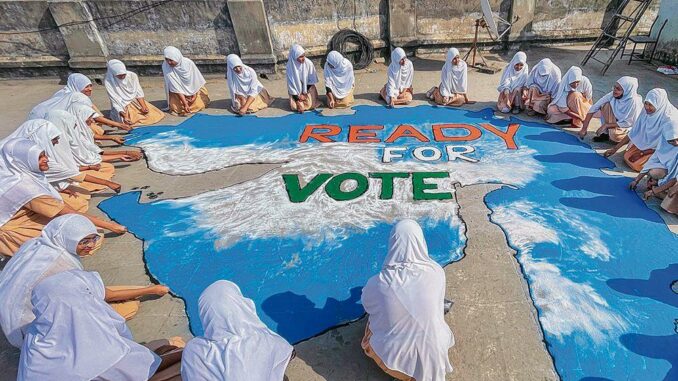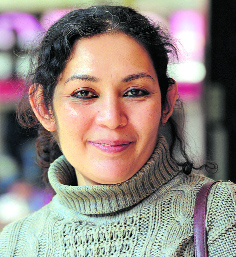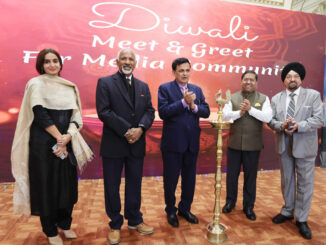
In spite of the presence of committed young leaders in the Congress, the party’s overall image is that of a jaded force. It may be rooted in Gujarat, but it lost its credibility after defections from its ranks on many seats. Except for some individually wealthy candidates, the party is also stretched for resources and even the rally of Rahul Gandhi, held on November 21 in a tribal pocket of Gujarat, was organized on a modest scale.

The hegemony of the BJP is all too visible in travels across Gujarat, not because all people are deliriously happy with the uninterrupted 27-year reign of the party; some indeed are die-hard fans of what can be called ‘Moditva’, which combines personality worship of the Prime Minister with regional and Hindutva pride. But there are also many among the Adivasis, Dalits and Muslims and a section of the urban working class who are distressed by price rise, unemployment and poor public infrastructure in education and health. They could stay with the Congress, the traditional opposition, or explore the Aam Aadmi Party (AAP) the second time. Yet, scratch beneath the surface and they too believe that neither opposition party is in a position to eventually defeat the BJP. Therein lies the rub for when people do not believe that there can be a change through the electoral process, what we get is a relatively dull election in Gujarat. Never mind the razzmatazz of the many rallies of the PM: he is out there campaigning because he would know there is a certain ennui among the electorate and the huge cadre mobilization is designed to change that, add an edge to the process, and bring voters to the polling booth.
It is a particularly flat election compared to the last contest in 2017, when the Patidar agitation, led by Hardik Patel, had made a strong impact and resulted in the worst-ever performance of the BJP, which got just 99 seats in a House of 182 (more were added later through defections from the Congress, but that is now a routine story). Many observers believe that the Congress could have won that election, had it not been for some last-minute reversals in the Surat belt. Since then, Hardik Patel has become a spent force who lamely joined the very BJP he abused day and night. Ahmed Patel, long-time Congress treasurer and financier of all campaigns in Gujarat, has passed away and there is none among the traditional state leadership who can do anything beyond attempting to maintain the status quo. Still, it’s not as if there are no exciting young figures in the Congress. There is 42-year-old MLA Anant Patel (an Adivasi Patel), who led a strong protest against the Par-Tapi-Narmada river-linking project in tribal areas outside Surat and compelled the Narendra Modi-led Central Government to withdraw it for now. Union Finance Minister Nirmala Sitharaman had announced the project in her Budget speech and instantly a protest erupted in the tribal pockets of south Gujarat along the Narmada and Tapi rivers. The Congress was at the forefront of those protests and has its hopes pinned on doing well in the Adivasi belt.
Also, there is 41-year-old Jignesh Mevani, a Dalit politician, contesting this time on the Congress ticket from his constituency Vadgam in Banaskantha district of north Gujarat. He had won the seat in 2017 as an Independent, but given the huge machinery that the BJP is unleashing against him, it is a David versus Goliath contest in which Mevani is short of resources. So much so that he has started a crowd-funding initiative to finance his campaign and can be seen poring over every bill in the midst of electioneering. An advocate of land reforms and labor rights, he runs platforms and agitations for the Dalit community and was prominent in the protest against the public flogging of Dalits at Una, Gujarat, in 2016. A former journalist, was arrested by the Assam police in April for a tweet criticizing the PM. In spite of the presence of committed young leaders in the Congress, the party’s overall image is that of a jaded force. It may be rooted in Gujarat, but it lost its credibility after defections from its ranks on many seats. Except for some individually wealthy candidates, the party is also stretched for resources and even the rally of Rahul Gandhi, held on November 21 in a tribal pocket of Gujarat, was organized on a modest scale. What the Congress is spending is peanuts, grown in abundance in Gujarat, compared to the BJP in an age when the wealthiest businessmen of India are from Gujarat (there is a road in Ahmedabad referred to as Billionaire Street).
The AAP, meanwhile, has the energy and audacity that the Congress is missing in this campaign. Party leader Arvind Kejriwal has set the agenda, but AAP does not have the necessary organizational base to make a mark in many parts of Gujarat. Meanwhile, conventional wisdom says that the young party could cut into the Congress’ vote share. But if it does well in Surat, where it is visibly in the contest, it would also be damaging the BJP that dominates the city and indeed all urban centers in the nation’s most urbanized state.
Congress candidates admit that there is public interest in AAP and it’s hard to predict how much impact the new party will eventually have in the election. A visit to an AAP office, however, also reveals the troubles confronting the party: as the countdown to the voting day begins, some volunteers have vanished due to pressures from family, community and fear of reprisal. The starkest example of this was the ‘disappearance’ of AAP candidate from Surat East, Kanchan Jariwala, who later turned up to withdraw his nomination at the last minute.
The AAP actually remains the X-factor in this election as traditional parameters cannot be applied to it. Will it crash or singe other players remains to be seen. What can be said about this election in Gujarat is that if there is an undercurrent against the BJP, it is muted, while the supporters and cadre of the ruling party are emphatic about their faith in Prime Minister Modi in an age of Gujarati ascendancy.
(The author is a Senior Journalist)





Be the first to comment